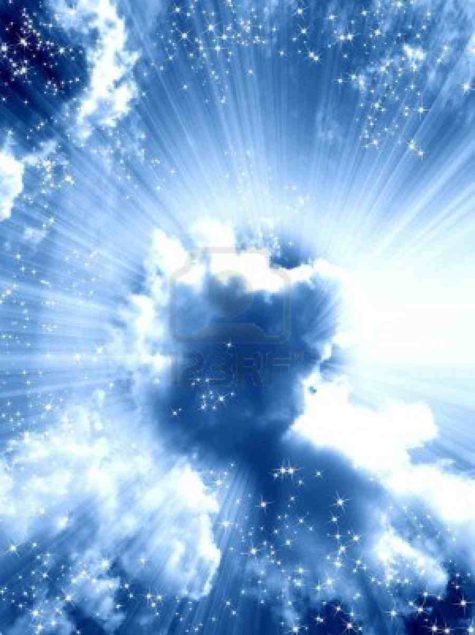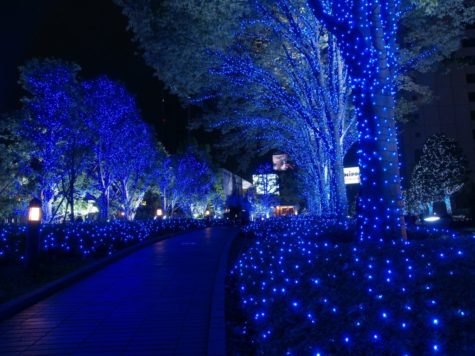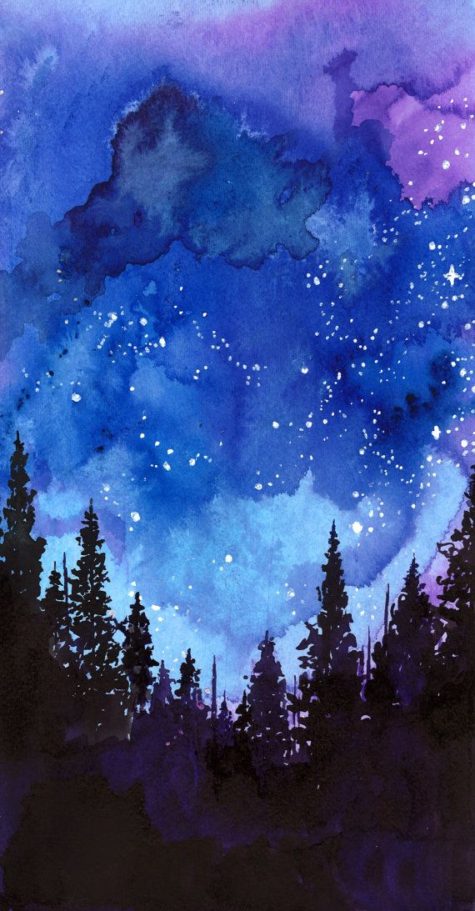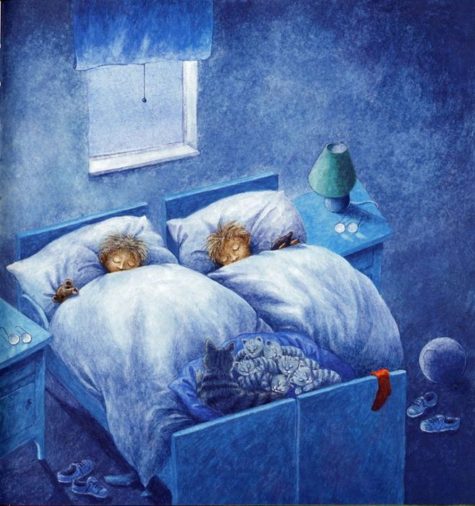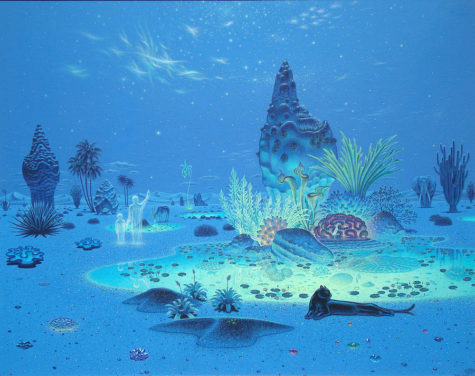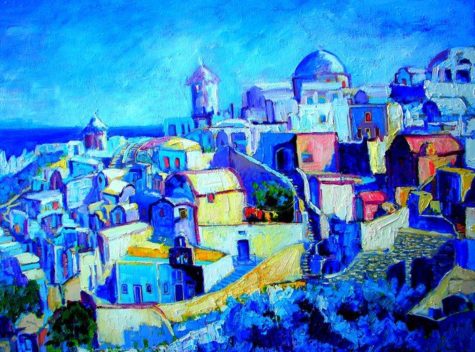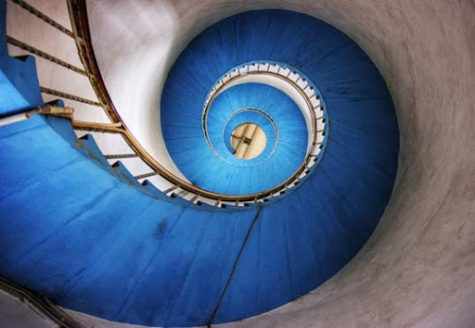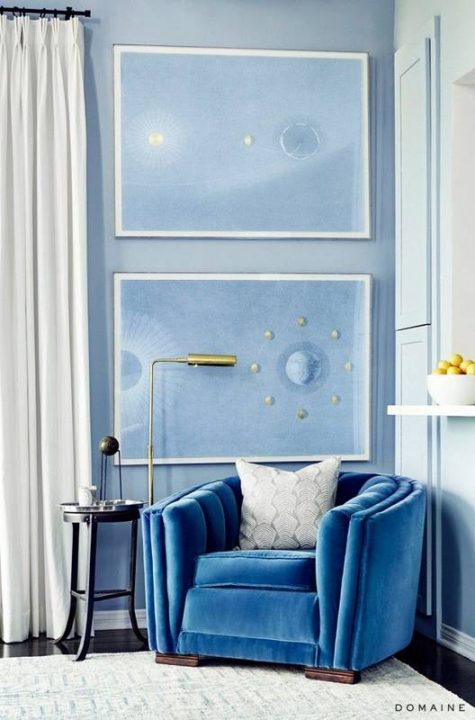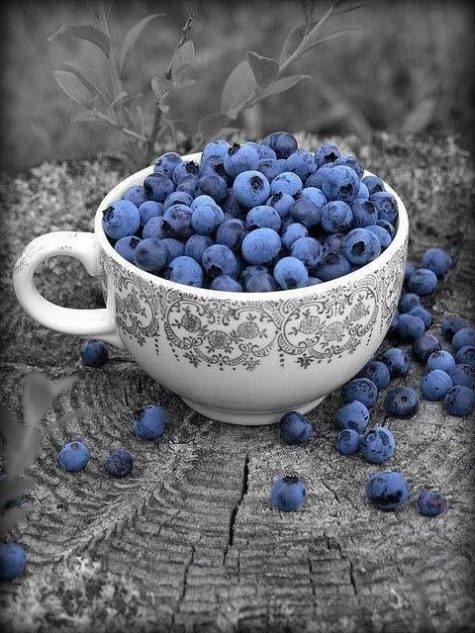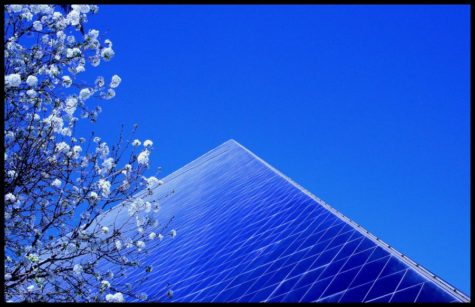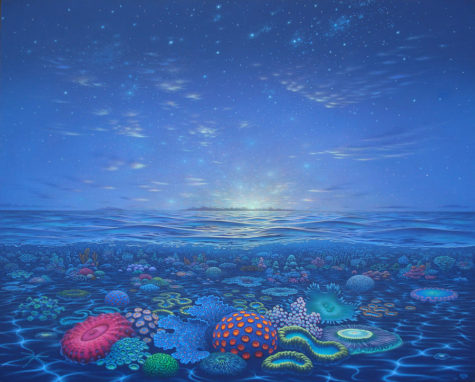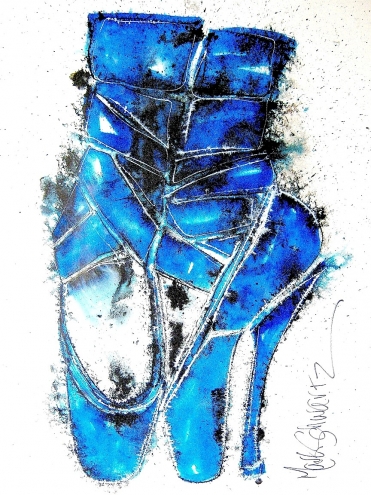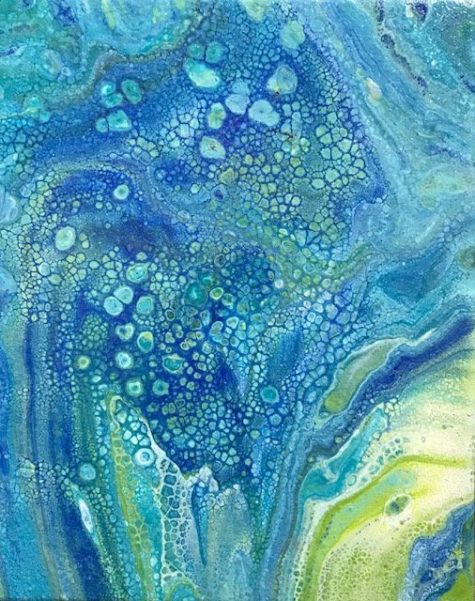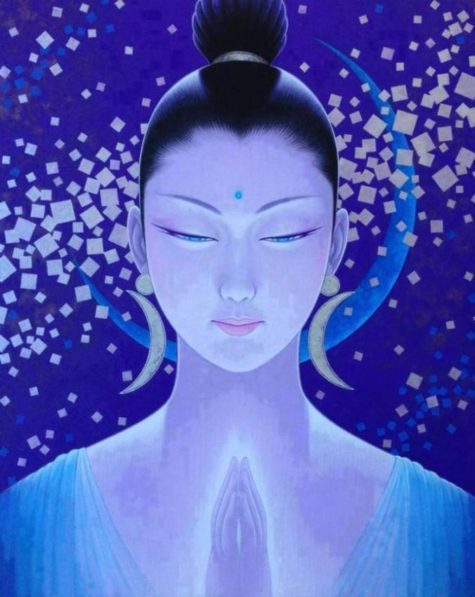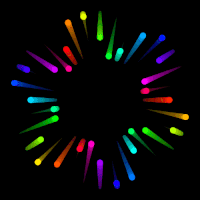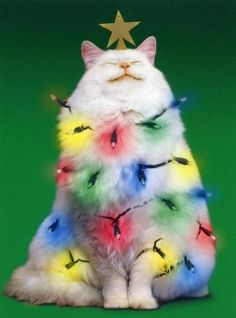Individual Colors
Red vs Blue – Color Matters
In high-stakes politics and business, there are only two colors of ties: red and blue. Oh, sure, you might spot purple or yellow now and then, but those are clear statements of aloofness, be they calculated or careless.
Few world leaders or CEOs want to be seen as aloof.
But does it matter whether one wears red or blue? Yes, suggest several studies, including one published in the journal Science on Feb. 6, 2009. More on that in a moment.
First, some color:
During his first address to a joint session of Congress, President Donald Trump wore a blue and white striped tie. Seated behind Trump, Vice President Mike Pence and Paul Ryan, Speaker of the U.S. House of Representatives, both wore blue ties.
For his inauguration on Jan. 20, President Donald Trump wore a red tie with his dark suit, while outgoing President Barack Obama donned a blue tie. Their wives wore the reverse, with Michelle Obama in a red dress and Melania Trump wearing a powder blue ensemble.
In the first presidential debate of 2016, then-nominee Donald Trump donned a blue tie, while the Democratic nominee, Hillary Clinton, wore a red suit. The Democrats may have decided on “red” during the election, as Clinton’s running mate, Sen. Tim Kaine donned a red tie during the first vice presidential debates on Oct. 4, while Trump’s running mate, then-Indiana governor Mike Pence sported a blue necktie
In President Obama’s first 11 days on the job, he wore only red and blue ties, observed Daily News reporter Joe Dziemianowicz. “Obama represents something different in politics, but he dresses the same as everyone else,” said Esquire senior fashion editor Wendell Brown. “Washington, D.C., is a strange place when it comes to style. All the emphasis is on fitting in.”
At the inauguration in January 2009, Obama and Joe Biden seemed to coordinate efforts: “For the inaugural festivities, both executives chose predictable dark gray suits, white dress shirts, enlivened by either baby blue or red necktie,” wrote Lisa Irazarry of The Star-Ledger in New Jersey. “As Obama wore a blue necktie on Monday and Biden wore his blue Tuesday, maybe they prearranged not to duplicate each other alternating necktie colors.”
Former President George H.W. Bush and former first lady Barbara Bush both had on plum overcoats and purple scarves at the inauguration. They can be aloof now. Plus, purple is associated with royalty and we do tend to treat our former presidents as such.
Where’s all this come from?
The ties to red and blue go way back. Neckties are said to be descended from the cravat and used throughout most of history, at least the portion during which humans have been fully clothed. Blue was once associated with the blue blood of British nobility, while red represented the red blood of the Guards.
Red has long been associated with love. And there’s some science to that, too. A study last year found red clothes on women makes men feel more amorous towards them. In sports, athletes wearing red are known to outperform their opponents, in part because referees cut the red-clad competitors some slack, researchers discovered.
Politicians, of course, love to gain advantages. Neckties are one way they try to do that.
As Washington Post columnist Tom Shales wrote of a televised Bush-Kerry presidential debate in 2004: “Bush wore his traditional blue necktie, though a darker shade than the usual robin’s-egg hue, and Kerry wore the classic TV-red necktie; red ties supposedly lend color to the face of whoever wears them, and if there’s anything the Massachusetts senator needs, it’s color.”
But wait, there’s more.
Red and blue are also thought by psychologists to improve brain performance and receptivity to advertising. The 2009 study in Science supports this idea. It also suggests nuances that world leaders and presidential candidates might want to know about, assuming one buys into the notion that presidential messages and speeches are essentially a form of advertising.
The study found that red is the most effective at enhancing our attention to detail, while blue is best at boosting our ability to think creatively.
“Previous research linked blue and red to enhanced cognitive performance, but disagreed on which provides the greatest boost,” said study leader Juliet Zhu of the University of British Columbia. “It really depends on the nature of the task.”
Zhu and colleagues tracked the performance of more than 600 people on cognitive tasks that required either creativity or attention to detail. Most experiments were conducted on computers with a screen that was red, blue or white.
Red boosted performance on detail-oriented tasks such as memory retrieval and proofreading up to 31 percent more than blue. For brainstorming and other creative tasks, blue cues prompted participants to produce twice as many creative outputs compared with red cues.
Why? Look around.
“Thanks to stop signs, emergency vehicles and teachers’ red pens, we associate red with danger, mistakes and caution,” Zhu said. “The avoidance motivation, or heightened state, that red activates makes us vigilant and thus helps us perform tasks where careful attention is required to produce a right or wrong answer.”
And the value of blue?
“Through associations with the sky, the ocean and water, most people associate blue with openness, peace and tranquility,” says Zhu, who conducted the research with UBC doctoral candidate Ravi Mehta. “The benign cues make people feel safe about being creative and exploratory. Not surprisingly it is people’s favorite color.”
Perhaps presidential candidate’s choice of red vs. blue neckties should be made more thoughtfully than they realize.
Source: Live Science
Why Is The Sky Blue?
We see a blue sky, because of the way the atmosphere interacts with sunlight.
White light, including sunlight, is made up of many different colors of light, each with its own corresponding wavelength.
Several different things can happen when this light encounters matter.
For instance, if sunlight passes through a transparent material, such as water, those light waves will refract, or bend, because light changes speed as it travels from one medium (air) to another (water). Prisms break up white light into its constituent colors, because different wavelengths of light refract at different angles — the colors travel at different speeds — as they pass through the prism.
Alternatively, some objects, such as mirrors, reflect light in a single direction. Other objects can cause light to scatter in many directions.
The blueness of the sky is the result of a particular type of scattering called Rayleigh scattering, which refers to the selective scattering of light off of particles that are no bigger than one-tenth the wavelength of the light.
Importantly, Rayleigh scattering is heavily dependent on the wavelength of light, with lower wavelength light being scattered most. In the lower atmosphere, tiny oxygen and nitrogen molecules scatter short-wavelength light, such blue and violet light, to a far greater degree than than long-wavelength light, such as red and yellow. In fact, the scattering of 400-nanometer light (violet) is 9.4 times greater than the scattering of 700-nm light (red).
Though the atmospheric particles scatter violet more than blue (450-nm light), the sky appears blue, because our eyes are more sensitive to blue light and because some of the violet light is absorbed in the upper atmosphere.
During sunrise or sunset, the sun’s light has to pass through more of the atmosphere to reach your eyes. Even more of the blue and violet light gets scattered, allowing the reds and yellows to shine through.
Source: Live Science
How Blue LEDs Affect Sleep
Fluorescent bulbs and light-emitting diodes (LEDs) have taken over lighting because they are more energy efficient and can provide better lighting than incandescent bulbs. They are found in everything from task lighting to televisions to smartphones. But while these bulbs are helpful in many ways, they can also have a negative effect on sleep.
The problem with artificial light
All artificial light, including LEDs, fluorescent bulbs and incandescent bulbs, can interrupt normal sleep patterns. The body’s biological clock works in rhythms that are set by the amount of light and dark the body is exposed to. This is called the circadian rhythm. Circadian rhythms control the timing of many physiological processes. They determine sleeping and feeding patterns, as well as brain activity, hormone production and cell regeneration.
When the body is exposed to only to the natural light of the sun, the hypothalamus area of the brain sets its sleep patterns according to when it is light outside and to when it is dark. Light is detected by the retina, which sends signals to the hypothalamus. When it starts getting dark outside, the hypothalamus signals to the body to start creating sleep hormones, like melatonin, and to drop the human’s body temperature to prepare for sleep, according to the National Sleep Foundation. In the morning, when light is sensed, the body is told to warm up and to produce hormones, like cortisol, that wake the body up.
When artificial light is added to a human’s day, the body’s natural rhythms become confused. The retina can now receive light no matter what time of day it is, so the body doesn’t know when to get ready for sleep. A study published in the Endocrine Society’s Journal of Clinical Endocrinology & Metabolism found that, when compared with dim light, exposure to room light during the night suppressed melatonin by around 85 percent in trials.
Blue light and sleep patterns
Fluorescent and LEDs bulbs create a two-fold problem when it comes to sleep. First, they produce artificial light. Second, they produce blue light.
Blue light wavelengths produced by electronics and overhead lights boost attention, reaction times and mood, according to Harvard Medical School. This can be great for the daytime when the body needs to be alert, but at night it can become a problem.
Research has found that exposure to blue light suppresses the production of melatonin more than any other type of light. It is believed that the shorter wavelengths in blue light is what causes the body to produce less melatonin because the body is more sensitive to this type of light.
“In terms of light and our brains, there is a spectrum of wavelengths that impacts the human circadian system,” said David Earnest, a professor and circadian rhythms expert at the Texas A&M Health Science Center College of Medicine. “Blue light is the most sensitive side of the spectrum.”
A study by the University of Toronto found that those who wore glasses that blocked blue light wavelengths produced more melatonin than those who didn’t during night shifts. Other studies have found that blue wavelengths suppress delta brainwaves, which induce sleep, and boost alpha wavelengths, which create alertness.
Solutions to blue light sleep problems
To get better sleep, it would be best to stop using artificial light altogether, but that isn’t possible in modern times. There are some more reasonable solutions, though.
“To prevent sleeping problems, avoid any exposure to blue light 30 to 60 minutes prior to bed. That means, no TV, tablets, computers or smart phones,” said Dr. Robert Oexman, director of the Sleep to Live Institute. “Ideally, you want your environment to be dimly lit so your body can start naturally producing melatonin.”
Andrew Simon, a naturopathic physician at the Bastyr Center for Natural Health, also suggested changing all overhead lights to full spectrum if possible, and to use some of the new smart home tech solutions to have lights turn off gradually or at a certain time, to help encourage the body’s natural sleep/wake cycle.
If these steps aren’t possible, dimming devices and wearing blue light filtering glasses can help.
Source: Live Science
Blue – Symbolism and Superstition
- Truth and the Intellect
- Wisdom
- Loyalty
- Chastity
- Peace
- Piety and Contemplation
- Spirituality
- Eternity
Blue is the color of the Heavens and is related to the fifth Chakra. Blue is traditionally worn by the Virgin Mary, the very embodiment of all the qualities described above. Whereas the reds, oranges and yellows carry with them a carnival atmosphere, blue is more sober, even somber despite its many variations.
If we’re “feeling blue” then we’re depressed or melancholy. And yet the bluebird is a universal symbol for happiness. The color has even given its name to a rich vein of music. The “blues” actually refers to “blue notes.” These are notes, either sung or played, that are pitched down a little for expressive purposes. An example is Billie Holiday’s heartbreaking rendition of “Strange Fruit.”
There’s something cool and detached about blue that gives rise to its reputation for spirituality and chastity. Above all blue is the color of the sky. Like the sky, blue is infinitely spacious. It contains everything, and yet contains nothing. The color is therefore associated with ideas of eternity.
In Jewish tradition the city of Luz, where the Immortals live, is also called The Blue City. Similarly, the mythical sacred mountain of the Hindus, Mount Meru, is constructed entirely of sapphire on its southern face and it’s this that is said to tinge the skies with blue.
To put any color out of context can have an alienating and often frightening effect. Knowing this, early British warriors daubed themselves in woad. These blue-skinned savages must have been an alarming sight for Roman soldiers.
To do something “once in a blue moon” is to do it very rarely. The phrase refers to the appearance of a second full moon within a calendar month, which actually happens about every thirty-two months.
Members of the aristocracy or the royalty are described as having “blue blood,” but why? The phrase originated with the Spanish, sangre azul, and refers to the pale-skinned Castilian ruling classes who prided themselves on never having interbred with darker-skinned races. Therefore, their blue veinous blood was plainly visible underneath the surface of their skin. There’s even a particular shade of blue that is meant to represent this color, called Royal Blue.
 Blue is one aspect of the Hindu legend of Krishna that has remain unchanged through time and geography. We look at what this “blue magic” is all about, and why even Krishna’s sworn enemies were irresistibly drawn to it.
Blue is one aspect of the Hindu legend of Krishna that has remain unchanged through time and geography. We look at what this “blue magic” is all about, and why even Krishna’s sworn enemies were irresistibly drawn to it.
Blue is the color of all-inclusiveness. You will see in the existence, anything that is vast and beyond your perception generally tends to be blue, whether it is the ocean or the sky. Anything which is larger than your perception tends to be blue because blue is the basis of all-inclusiveness. It is based on this that so many gods in India are shown as blue-skinned. Shiva has a blue skin, Krishna has a blue skin, Rama has a blue skin. It is not that their skin was blue. They were referred to as blue gods because they had a blue aura.
All around the world, baby boys are dressed in blue. This originates in the belief that evil spirits congregate around newborn babies. Fortunately, these spirits detest the color blue, as it deprives them of their power. Consequently, dressing a baby boy in blue provides him with protection at a time when he is totally vulnerable. Blue was also considered an effective way of averting the evil eye.
Back then, girl babies were not considered to be as important as boys, and weren’t given any protection. Eventually, times changed, and girls were given the color pink.
Other meanings associated with the color blue:
- Navy blue and white, when used together, often represents sailing, and sailors.
- The saying “out of the blue” is used in reference to something unexpected.
- The expression “singing the blues” references a person who is complaining about their circumstances.
- The phrase “true blue” stands for someone who is loyal, trustworthy, and faithful.
- The saying “baby blues” is used to describe the sadness that women feel after giving birth. It is often used in reference to post-partum depression.
- A “blue ribbon” represents the best, first place, top prize, or number one.
- The expression “into the blue” means entering the unknown or uncertainty, not knowing what you’re walking into.
- The phrase “blue Monday” means feeling sad, often the feelings experienced when the weekend is over and the workweek begins.
- The term “blue laws” refers to laws that were originally passed to enforce specific moral standards.
- The saying “blue language” refers to using profanity.
- The “Bluebook” is known as a register of people of significance in social standing. Later, the term Bluebook was adapted by the car industry as the name of the registry listing vehicle values.
Borrowed from Sigils, Symbols and Signs
Blue in Media and Design
When I haven’t any blue I use red.
~Pablo Picasso
The effects of the color blue has an impact on many areas of life, including clothing choices, language and cliches, interior design, art, religion and health.
The cooling and relaxing qualities of blue, remind us of the peace and calmness of night. Clear blue is uplifting, while midnight night blue has a sedative effect that promotes meditation and intuition.
Blue is a very popular color, blue skies and blue water are full of positive meaning in every culture. We are, after all, living on the “blue planet.”
However, the color blue also has some negative associations due to the connection between lack of oxygen and blue skin color. It’s also true that too much dark blue can be depressing.
Despite the color’s gloomy connotations, research suggests that exposure to blue light can increase confidence and boost happiness levels. When researchers exposed a group of volunteers to a range of colors and lights. They found that blue and green made male subjects feel happier, while blue, purple and orange did the same for women.
Blue and Interior Decor
Light and soft blue can alleviate insomnia and are good choices for bedrooms. Royal blue is appropriate for dining rooms and living rooms. Combinations of blue and yellow are often used in kitchens. Blue is also a natural choice for bathrooms due to the color symbolism association with water. Dark blue can be used successfully for meditation rooms.
Predominantly blue paintings are usually calm and refreshing. Artworks depicting rivers, waterfalls and the ocean often emphasize blue. Landscapes featuring large blue skies are also good options for introducing blue into your environment.
Most design motifs associated with blue are smooth, flowing patterns. Blue tends to be connected to asymmetrical, free form and curved images such as waves or meandering streams. Art featuring blue has almost universal appeal and is a good choice for gifts as well as personal use.
Note: This post was compiled by Shirley Twofeathers for Color Therapy, you may repost and share without karmic repercussions, but only if you give me credit and a link back to this website. Blessed be.
Blue – The Correspondences
Vermeer’s blues are silent, but they touch your soul.
~Jonathan Jones
Foods and supplements that work in a blue way:
Blue is a natural appetite suppressant, and one of the least appetizing colors for food. Many people report being actually repulsed by blue food. This may be an evolved instinct because many toxic plants and fruits have a blue color. Sometimes blue food is embraced as a token of the avant-garde and truly adventurous as in the case of the recent fad for blue potatoes.
There are very few foods that are blue in color, however some foods work in a “blue” way, and are useful when the voice, glands and organs of the neck, and communication skills need help.
- Blue foods are mainly various types of berries, but also include seaweed and some white fish.
- Blueberries, kelp, seaweed products, asparagus.
- Iodine.
- Blue is associated with chamomile, often used as a bedtime tea.
Essential oils:
Blue is linked to tea tree oil and is useful for sensitive skin or reducing skin problems. Other essential oils include:
- Sweet pea
- Lilac
- Myrrh
Blue crystals and stones:
Blue gemstones are believed to aid in creating calm and relaxation in crisis situations or chaotic situations, to open the flow of communication between loved ones, to feel genuinely inspired, and to gain the courage to speak from the heart. Blue gemstones promote peace and are used to calm ragged emotions. They are used to provide relief to people who have difficulty sleeping or who have nightmares.
- Blue gemstones to wear to feel calm are blue sapphire and blue topaz.
- Lapis lazuli and azurite are said to heighten psychic power, as is Moonstone.
- Aquamarine stimulates healing improves confidence and the ability to stand fast, helps the flow of communication, stimulates the intellect and stabilizes the emotions.
- Turquoise is supportive and protective. It is used a talisman of strength and protection to protect against accidents. . A powerful healing stone for emotional, mental and physical problems.
- Blue lace agate soothes and calms, speeds thought processes, helps one to reach high spiritual awareness and has an inspirational effect.
- Celestite is great for dream work, lifts mood, helps throat problems and with spiritual communication.
- Sapphire relaxes and improves the mind balances all aspects of self. It promotes calm, peace and detachment
- Lapis Lazuli is also listed an indigo stones. A powerful stone, releases stresses, enabling experience of deeper peace, stimulates the mind and higher understanding.
Symbolism of the Color Blue:
- Truth and the intellect
- Wisdom
- Loyalty
- Chastity
- Peace
- Piety and contemplation
- Spirituality
- Eternity
Note: This post was compiled by Shirley Twofeathers for Color Therapy, you may repost and share without karmic repercussions, but only if you give me credit and a link back to this website. Blessed be.
Blue – In Depth
In Egypt, blue was associated with the sky and with divinity. The Egyptian god Amun could make his skin blue so that he could fly, invisible, across the sky.
Blue could also protect against evil; many people around the Mediterranean still wear a blue amulet, representing the eye of God, to protect them from misfortune. In Islam,blue (including turquoise) is the color both of religion and community and is often used for decorating mosques.
In Greek and Roman days, blue symbolism was associated with the sky gods Jupiter, Juno and Mercury. In Judaism, blue symbolism is connected to God the Father. In the Catholic Church, blue symbolism is most closely related to the Virgin Mary, the Queen of Heaven.
Blue symbolism associates blue with freedom, strength and new beginnings. Blue skies are emblematic of optimism and better opportunities. Blue is the color of loyalty and faith. Blue is power. Blue is also the color of protection. Blue symbolism is nearly universal in meaning. As a result, blue is used in national flags and symbols around the world, including the flag of the United Nations.
Blue represents water, the source of life. Agricultural people have traditionally worshiped water in the form of rivers, clouds, mist and rain. Many favorite garden flowers are also blue, including delphinium, larkspur, pansies, irises, anemone, bluebells, hyacinth, lobelia, veronica, and ageratum.
Although blue is even more popular in the western world than is other areas of the world, blue skies and blue water are full of positive meaning in every culture. We are, after all, living on the “blue planet.”
Etymology:
The English language commonly uses “blue” to refer to any color from navy blue to cyan. The word itself is derived from the Old French word bleu.
The modern English word blue comes from Middle English bleu or blewe, from the Old French bleu, a word of Germanic origin, related to the Old High German word blao. In Russian and some other languages, there is no single word for blue, but rather different words for light blue (голубой, goluboy) and dark blue (синий, siniy).
The root of these variations was the Proto-Germanic blaewaz, which was also the root of the Old Norse word bla and the modern Icelandic blar, and the Scandinavian word bla, but it can refer to other colors.
A Scots and Scottish English word for “blue-grey” is blae, from the Middle English bla (“dark blue,” from the Old English blood). Ancient Greek lacked a word for color blue and Homer called the color of the sea “wine dark”, except that the word kyanos (cyan) was used for dark blue enamel.
Several languages, including Japanese, Thai, Korean, and Lakota Sioux, use the same word to describe blue and green. For example, in Vietnamese the color of both tree leaves and the sky is xanh. In Japanese, the word for blue (青 ao) is often used for colors that English speakers would refer to as green, such as the color of a traffic signal meaning “go”.
 Spectral coordinates:
Spectral coordinates:
- Wavelength: 450-495 nm
- Frequency: 670-610 THz
Color coordinates:
- Hex triplet: 0000FF
- sRGBB: (0, 0, 255)
- HSV: (240°, 100%, 100%)
Note: This post was compiled by Shirley Twofeathers for Color Therapy, you may repost and share without karmic repercussions, but only if you give me credit and a link back to this website. Blessed be.
Using The Color Blue
The colour blue – that is my colour – and the colour blue means you have left the drabness of day-to-day reality to be transported into – not a world of fantasy, it’s not a world of fantasy – but a world of freedom where you can say what you like and what you don’t like. This has been expressed forever by the colour blue, which is really sky blue. ~Louise Bourgeois
Light blue rooms are said to increase productivity and to assist with study and focus. There are reports that people retain more information when reading blue text. Students may score higher on tests taken in blue surroundings . Some sport performance such as weightlifting , may be enhanced in blue surroundings. This is possibly because blue has the effect of calming people and of enhancing mental clarity. Blue is also a good color for bedrooms because of its calming and relaxing qualities it helps people be receptive to sleep. Darker shades of blue can be cold and depressing.
Questions to ask yourself when drawn to blue:
- Is there a need to talk to people around you?
- What do you need to express to others?
Put blue in your life when there is:
- A need to calm agitated, excitable, or chaotic states.
- Exposure to blue light can increase confidence and boost happiness levels.
- Blue is excellent for emotional healing of stress and anxiety in moderation. Too much blue can can increase depression and apathy in those so inclined.
- A need to communicate clearly.
- Use blue paper for notes when you want help in remembering a speech or other information.
- A need for peace, detachment, solitude, and rest.
- A need to help with new information or in seeing information in context.
- A block or limitation to the flow of information and/or frustration, disappointment, and lack of progress in your endeavors and relationships.
- By helping to soothe the mind, blue is the color of truth, serenity and harmony.
- It has a sobering effect on the mind and encourages contemplation, promotes group unity.
- It discourages disease and disharmony.
- Helps reduce and manage “hot” emotions like anger, impatience, greed, or jealousy. It can help with self control and in chaotic situations.
- A desire to broaden your perspective in learning new information.
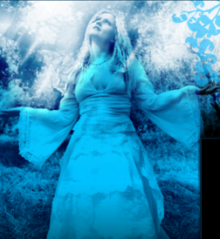 Wearing Blue:
Wearing Blue:
Blue denim is the most common clothing material in the western world. Men and boys in particular favor blue.Wear dark blues for a stable, calm conservative feeling. All shades of blue will help to make easy communication, whether it is with yourself or others.
Loving blue:
More people claim blue as their favorite color than any other color (over 50%). Blue cars have been among the top selling cars for decades.
In systems which correlate favorite colors with color symbolism, people who wear light blue are said to be analytical and have a practical approach to life. People who wear dark blue are intelligent and self-reliant and take on a great deal of responsibility. In any case, people are comfortable with blue and return to blue again and again.
Blue is often the chosen color by conservative people. Cool and soothing, dreamy and magical. Peace and rest. For people who keep a certain distance, but give calm and practical help; they are faithful and loyal, have a sense for order, logic and rational thinking. Flying in day-dreaming, ideals or nostalgia when felt misunderstood. Dark blue is more severe and can be melancholic. Blue is also the color of truth.
Not loving blue:
A person who has an aversion to blue, may be very disciplined, strong career worker, with an aversion to commentary or restriction. He may have charted out a clear direction for his life and wants to follow that no matter what.
Note: This post was compiled by Shirley Twofeathers for Color Therapy, you may repost and share without karmic repercussions, but only if you give me credit and a link back to this website. Blessed be.
Variations of the Color Blue
Blue is the only color which maintains its own character in all its tones…
~Raoul Dufy
Aqua: is the color of high ideals.
Azure blue: A color of true contentment, azure inspires determination and ambition to achieve great things, a sense of purpose in striving for goals.
Dark blue: This is the color of truth and moderation. Dark blue is the color of conservatism and responsibility. Although it appears to be cool, calm and collected, it is the color of the non-emotional worrier with repressed feelings, the pessimist and the hypocrite. Dark blue can be compassionate but has trouble showing it as its emotions run deep. Dark blue is a serious masculine color representing knowledge, power, and integrity, and is used quite often in the corporate world.
Indigo: is a great purifier of the bloodstream and also benefits mental problems. It is a freeing and purifying agent. Indigo combines the deep blue of devotion with a trace of stabilizing and objective red. Indigo is cool, electric, and astringent. Indigo links with and stimulates the brow chakra (third eye) and controls the pineal gland. It governs both physical and spiritual perception.It can be of great assistance in dealing with ailments of the eyes and ears.
Midnight blue: This color has a sedative effect that promotes meditation and intuition.
Navy blue: Navy blue can be associated with restrictive environments. It has much of the same effect as a dark blue.
Pale blue: Pale blue inspires creativity and the freedom to break free.
Sky blue: One of the calmest colors, sky blue inspires selfless love and fidelity. It is non-threatening and promotes a helpful nature that can overcome all obstacles. It is the universal healer.
Turquoise: is the symbol of youth, both the color and the gemstone. This color has a soothing affect. Turquoise is the color of communication. It contains the growth quality of green with the blue quality of communication. Turquoise has long been used in amulets to provide protection, health, confidence and strength. Increases intuition and sensitivity. Works disinfecting and antiseptic. Tones the general system. Builds the skin. Relaxes sensations of stress.
Note: This post was compiled by Shirley Twofeathers for Color Therapy, you may repost and share without karmic repercussions, but only if you give me credit and a link back to this website. Blessed be.
Healing With The Color Blue
Whenever I feel blue, I start breathing again.
~L. Frank Baum
Overview:
Dr. Edwin Babbitt, in his classic, “The Principles of Light and Color,” states that “The Blue Ray is one of the greatest antiseptics in the world.”
Blue is an all purpose healing color and a great antiseptic and astringent, it discourages disease and disharmony, calms the mind and nerves. Cooling, calming, and protecting, it relaxes the nervous system, helps reduce fever, inflammation and bleeding.
Blue is associated metaphysically with the throat and thyroid gland. Blue-colored light has been shown to reduce blood pressure. Blue calms the autonomic nervous system and is anti-inflammatory. Dark blue affects the pituitary gland, the regulator of sleep. Dark blue also reduces pain and strengthens the skeleton by keeping bone marrow healthy.
Light and sky blues are those most often used in healing work. Blue is good for soothing body, mind and spirit, highly recommended in case of shock. It is very good for treating burns, chickenpox and mumps. In moderation, blue is excellent for emotional healing of stress and anxiety (too much can increase depression and apathy in those so inclined),
The color blue also helps reduce and manage “hot” emotions like anger, impatience, greed or jealousy.
Healing with the color blue:
- Blue is cooling, electric, astringent.
- Good for emotional healing.
- Use a blue light for measles, chickenpox and mumps.
- It can help with self control and in chaotic situations.
- Highly recommended in case of shock.
- Cools down inflammations, fevers, and high blood pressure.
- Stops bleeding.
- Relieves the headaches.
- Calms the mind and nerves.
- Calms strong emotions like anger, aggression or hysteria.
- Brings tranquility.
- Great for insomnia.
- Enhances antiseptic effects
- It is used for stings, itches, rashes and bites.
- Soothing to the eyes.
- Anti-itching.
- Anti-irritation (for instance redness of the skin).
- Anti-stress.
- Soothes suffering.
- It is good for cooling, calming, reconstructing and protecting.
- A great antiseptic and astringent.
- It is very good for treating burns.
- Cooling, calming and protecting.
- It relaxes the nervous system.
- Helps reduce fever, inflammation and bleeding.
- Blue can be used for any type of ailment associated with speech, communication, or the throat.
- Excellent for laryngitis or inflammation of the larynx.
- Also can be used for tooth problems and associated pain and inflammation.
Contra-Indications
- Blue can increase depression, tiredness and sorrow, so its use should be observed carefully and darker shades should be used only moderately.
Note: This post was compiled by Shirley Twofeathers for Color Therapy, you may repost and share without karmic repercussions, but only if you give me credit and a link back to this website. Blessed be.

